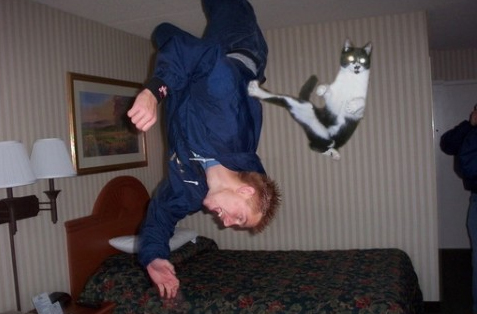Just as food products are labeled with calorie and nutritional information, consumer products are beginning to bear details about their environmental impact, like the amount of greenhouse gases produced in making, transporting and selling them.
One is Timberland, which since last autumn has included a "nutrition label" with its footwear, detailing the energy used in making the shoes, the portion that is renewable, and the factory's labor record.
I am a big fan of adding these enviornmental labels to products to help customers see the impact of the products they purchase.
These labels are important because the environmental impact of products is not always obvious.
"We found that our supply chain goes farther than we imagined," Swartz said. "You have to go back to the cow" that supplied the leather.
Timberland was surprised to find that more than half of the energy used (and greenhouse gases generated) in making a pair of shoes comes from processing and producing the raw materials. The next-biggest energy drain is the retail environment (think of all those brightly lighted malls), followed by factory operations and, finally, transportation — almost a complete inversion of what Timberland had assumed.
"The vast majority of our carbon footprint comes before we even make the shoe," Swartz said.
Too often environmentalists come up with suggestions on how to change your behavior based on what intuitively sounds good (such as recycling or on buying local), rather than actually running a
life cycle analysis to figure out where the largest impacts occur. Transportation of goods is often the target whereas this analysis shows that producing the product and the retail environment take up more energy.
While these labels are valuable to environmentally conscious customers in determining what to buy (or not to buy), these numbers are even more valuable to the managers of Timberland. When they see which steps have the largest environmental impact, they can focus on making improvements there.
Why aren't more companies creating these kinds of labels?
Timberland, like many companies, has hundreds of factory partners around the world, which use material from thousands of suppliers. It takes a large investment to collect such far-flung information.
Once companies understand what goes on in their supply chains, there are hundreds of calculations to be made. How much energy is used to transport a pair of shoes? That depends. Do you assume that the trucks are two-thirds or completely full? What kind of fuel do they use? And what about employee- commute miles? Should they be included, too?
It is expensive to calculate such numbers. It also takes lots of times to figure out how to handle all of those questions. That is why I believe you should support the companies that are making the effort by purchasing their products. Once a few companies have answered the questions and have collected the data throughout their supply chain, it will be much easier and less expensive for others to follow.
What information should be put on the label?
Timberland first relied on metrics from its global footwear production, so every pair of shoes displayed similar statistics: 3.1 kilowatt hours of energy to produce, 5 percent renewable energy used and no child labor.In
February, the company, which is based in Stratham, New Hampshire, introduced the next evolution of its labels, called green index tags, which move closer toward measuring precisely the effect of each pair of shoes. Instead of raw data, the tags use a scale of 0 to 10, with the bottom denoting the smallest impact (or best choice) on an expanded range of issues.
Climate effect is measured from raw materials through production of finished product. A 0 rating means that less than 4.9 kilograms of carbon equivalents were generated, while a 10 signifies 100 kilograms or more. (One hundred kilograms, or 220 pounds, is roughly the equivalent of burning 11 gallons of gasoline.)
This is tricky, as too much data can swamp the customer, too little and it might not be of any use. I am in favor of something simple at the top of the label, like the 0-10 rating they are using, so that a customer can easily see its overall impact, but then below it have more details for those that are really interested.
The information is not very useful, however, unless customers have something to compare it with. If a pair of Timberlands rates a 2 on climate impact, that is great. But how does it compare with your Nikes?
Timberland said it hoped to broaden its green index into an industry initiative. Swartz said that if he could sign up 10 or 12 companies, others might feel pressure to follow suit.
Ideally you want to be able to compare between companies which would require some kind of standards on how the numbers are calculated or independent verification from a 3rd party. Though, because there are so many assumptions used in calculating these values, at present it might be good to have many different types of analysis going on to get different opinions.
I applaud Timberland's effort and hope they are able to find another 10 companies to join in with them.
via
International Herald Tribune via
DailyGood
Read More...
Summary only...

















